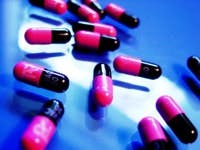University at Buffalo chemists have identified the metabolites of two antibiotics and a medical imaging agent at wastewater treatment plants. The data, which the UB scientists presented March 16, 2006, at the Pittsburgh Conference on Analytical Chemistry and Applied Spectroscopy in Orlando, Fla., will allow wastewater treatment plants to begin monitoring for these byproducts, according to the University.
The results also reinforce concerns about excreted pharmaceutical compounds from wastewater systems that may end up in the water supply, potentially resulting in adverse effects for humans and the environment. For example, antibiotics and their metabolites can significantly increase antibiotic resistance in the population. Synthetic hormones can act as endocrine disruptors by mimicking or blocking hormones and disrupting the body's normal functions.
The UB presentations were made as part of a day-long symposium on “Degradation and Treatment of Pharmaceuticals in the Environment.” It was chaired by Diana Aga, Ph.D., assistant professor of chemistry in UB's College of Arts and Sciences and leader of the UB team.
According to Aga, it has been only in the past five years that analytical-chemistry techniques have become sufficiently affordable and practical to allow researchers to detect pharmaceuticals and their metabolites efficiently at the parts-per-billion and parts-per-trillion range.
“Current wastewater treatment processes are optimized to reduce nitrates and phosphates and dissolved organic carbon, the major pollutants of concern in domestic wastes,” Aga said. “However, treatment facilities don't monitor or measure organic microcontaminants like residues of pharmaceuticals and active ingredients of personal care products.”
Aga said most previous studies looked for drugs' active ingredients in treated wastewater.
“But now we are doing laboratory studies to characterize what these ingredients degrade into during wastewater processing,” she added. “The lesson is that not detecting active ingredients in the effluent doesn't mean the water is clean. The pharmaceuticals we monitored are not degraded completely in the treatment plants; most of them are just transformed into other compounds that still may have adverse ecotoxicological effects.”
The UB researchers have identified the metabolites for sulfamethoxazole and trimethoprim, commonly prescribed antibiotics, and for a synthetic estrogen, a common ingredient in birth control pills and in hormone replacement therapy.
In research published in January in Analytical Chemistry, the UB chemists also found that iopromide, a pharmaceutical imaging agent that patients consume before taking MRI tests, is barely degraded in the conventional activated sludge process. However, they found that when conditions in biological treatment systems are optimized for nitrogen removal, this imaging agent does degrade.
Aga said these findings have important implications because it means wastewater treatment processes can be optimized to remove persistent pharmaceuticals in wastewater.
The UB researchers obtained samples during fall and spring from local wastewater treatment plants in the western New York towns of Amherst, East Aurora, Lackawanna, Tonawanda and Holland, representing suburban, urban and rural areas. They sampled effluent before and after each water treatment stage to examine relative efficiencies of each treatment process.
Aga noted that based on the team's findings, a combination of biological, chemical and physical processing techniques probably will be the most successful to remove completely pharmaceutical compounds and their metabolites from wastewater.
“Originally, it was hoped that during the disinfection process, through chlorination or ultraviolet techniques, removal of the drugs that we studied would be enhanced, but, in fact, neither of these is effective,” she said.
The researchers did find, however, that that most wastewater treatment processes are effective in significantly degrading some common antibiotics, such as ciprofloxacin and tetracycline.
Source: University at Buffalo


